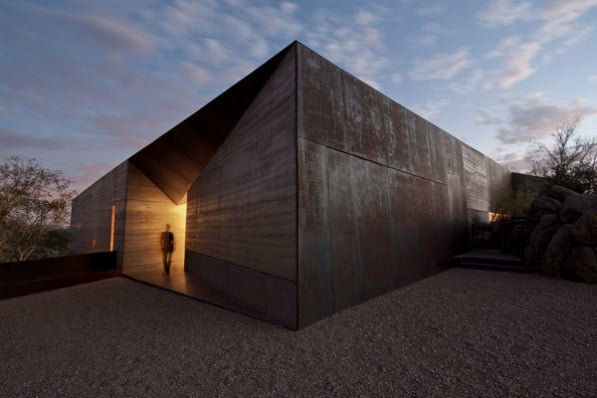Wendell Burnette Architects designed this stunning home in Scottsdale, AZ to exemplify the Sonoran Desert topography by seamlessly blending the structure with its surroundings. Because of this, the Desert Courtyard House is built from materials found on the site. The other building materials were strategically selected in order to help the house recede like a shadow into the desert floor, blending the design with its environment and minimizing the obstruction of the expansive vista from the community above it.

Photo: Bill Timmerman
Defining the Design
Plinth /plinTH/ (noun)
A heavy base or platform upon which a structure rests. The plinth provides protection for the Desert Courtyard House from rain and erosion to the rammed earth walls. Materials from the local river beds were also incorporated into the plinth. The architects worked the surfaces of the plinth in order to reveal the composite qualities, creating a window into the geologic time of this place.
Monocline /ˈmänəˌklīn/ (noun)
A bend in rock strata that are otherwise uniformly dipping or horizontal. The location of this build site was carefully selected according to the landform. The overall height of the Desert Courtyard House follows the design guidelines and therefore the ground at precisely 24’ above natural grade in a segmented monocline. The roof begins at the outermost edge of the monocline and continues toward the courtyard, creating an irregular frame for the sky.
Rammed Earth /ræmd ərTH/ (noun)
A technique for building walls, foundations, and floors using natural raw materials. Using one of the oldest methods of construction, the walls for the Desert Courtyard House were made by compacting soil removed from the site during the excavation process. The walls act as thermal mass to support the expanses of glass and help keep the home’s temperature stable.
Visit Wendell Burnette Architects: http://wendellburnettearchitects.com/
Follow them at: Facebook | LinkedIn


